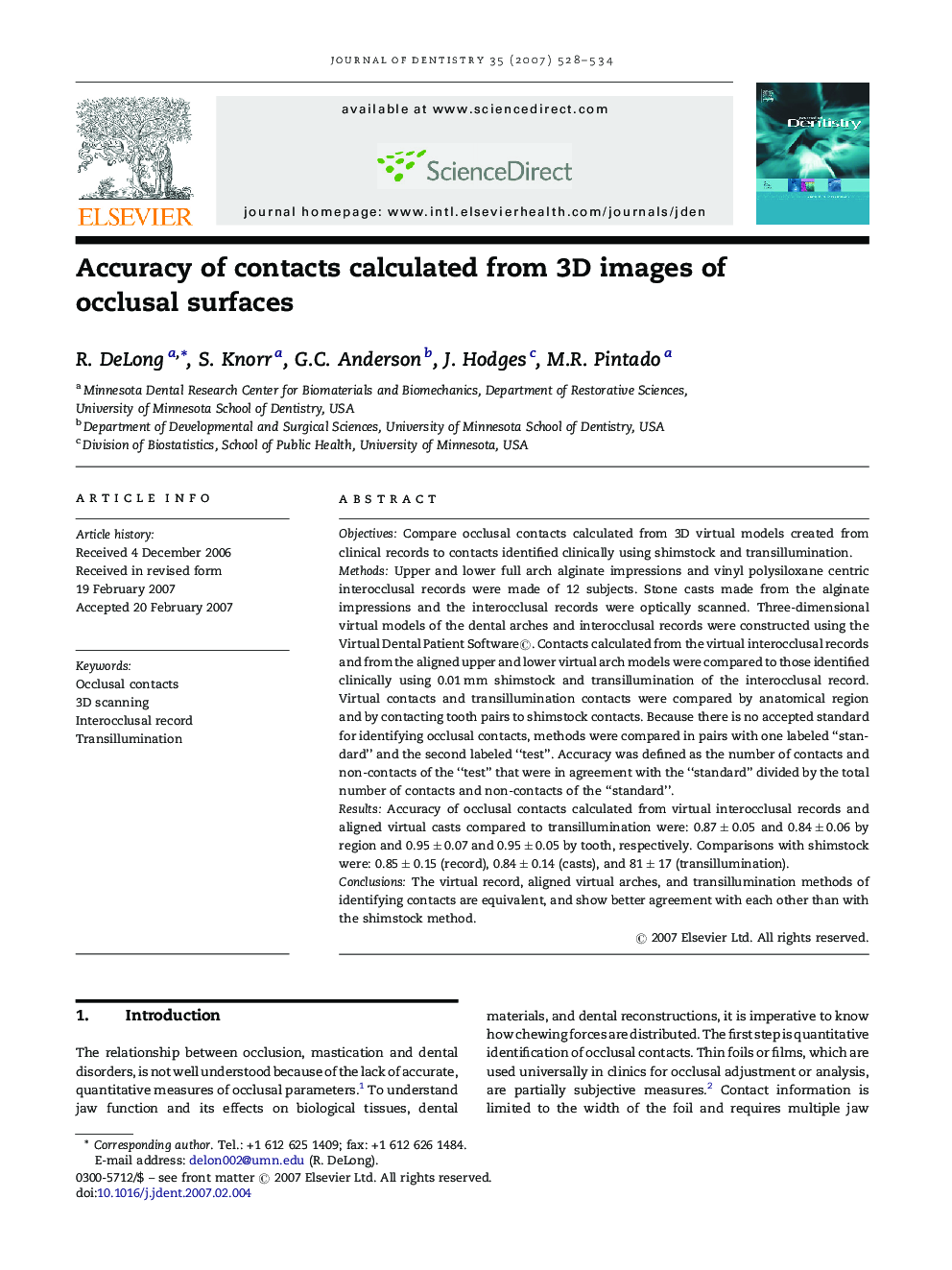| Article ID | Journal | Published Year | Pages | File Type |
|---|---|---|---|---|
| 3145734 | Journal of Dentistry | 2007 | 7 Pages |
ObjectivesCompare occlusal contacts calculated from 3D virtual models created from clinical records to contacts identified clinically using shimstock and transillumination.MethodsUpper and lower full arch alginate impressions and vinyl polysiloxane centric interocclusal records were made of 12 subjects. Stone casts made from the alginate impressions and the interocclusal records were optically scanned. Three-dimensional virtual models of the dental arches and interocclusal records were constructed using the Virtual Dental Patient Software©. Contacts calculated from the virtual interocclusal records and from the aligned upper and lower virtual arch models were compared to those identified clinically using 0.01 mm shimstock and transillumination of the interocclusal record. Virtual contacts and transillumination contacts were compared by anatomical region and by contacting tooth pairs to shimstock contacts. Because there is no accepted standard for identifying occlusal contacts, methods were compared in pairs with one labeled “standard” and the second labeled “test”. Accuracy was defined as the number of contacts and non-contacts of the “test” that were in agreement with the “standard” divided by the total number of contacts and non-contacts of the “standard”.ResultsAccuracy of occlusal contacts calculated from virtual interocclusal records and aligned virtual casts compared to transillumination were: 0.87 ± 0.05 and 0.84 ± 0.06 by region and 0.95 ± 0.07 and 0.95 ± 0.05 by tooth, respectively. Comparisons with shimstock were: 0.85 ± 0.15 (record), 0.84 ± 0.14 (casts), and 81 ± 17 (transillumination).ConclusionsThe virtual record, aligned virtual arches, and transillumination methods of identifying contacts are equivalent, and show better agreement with each other than with the shimstock method.
